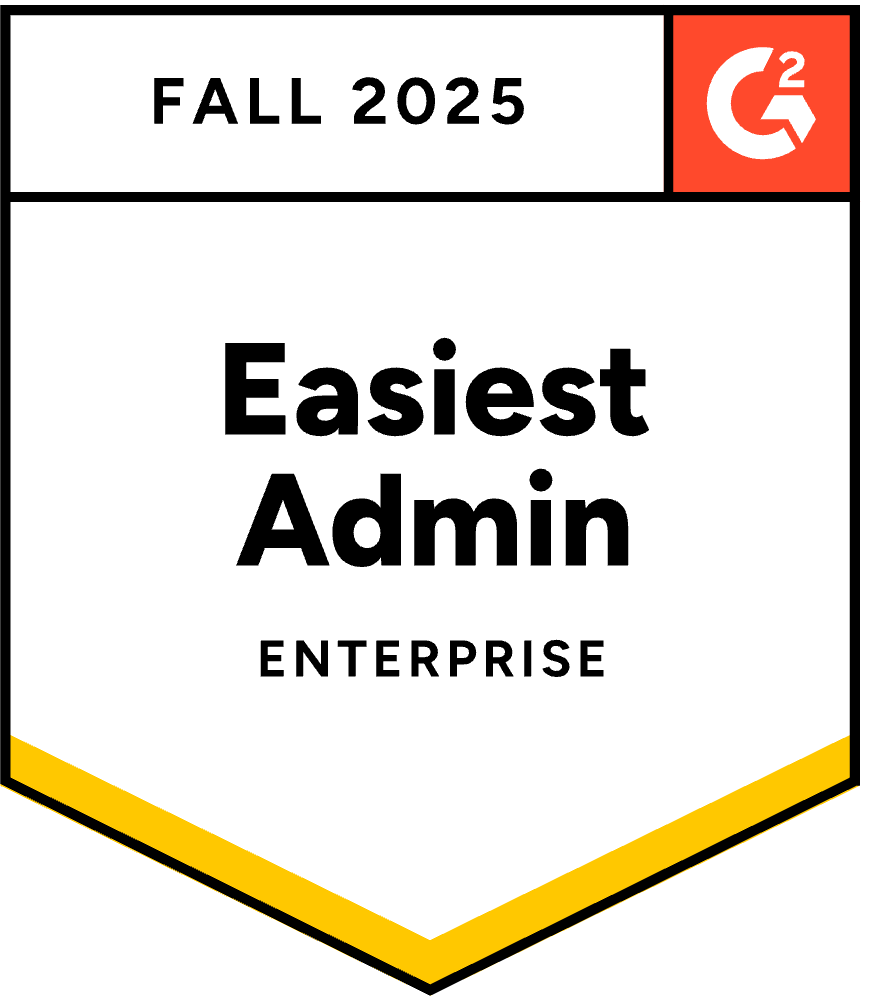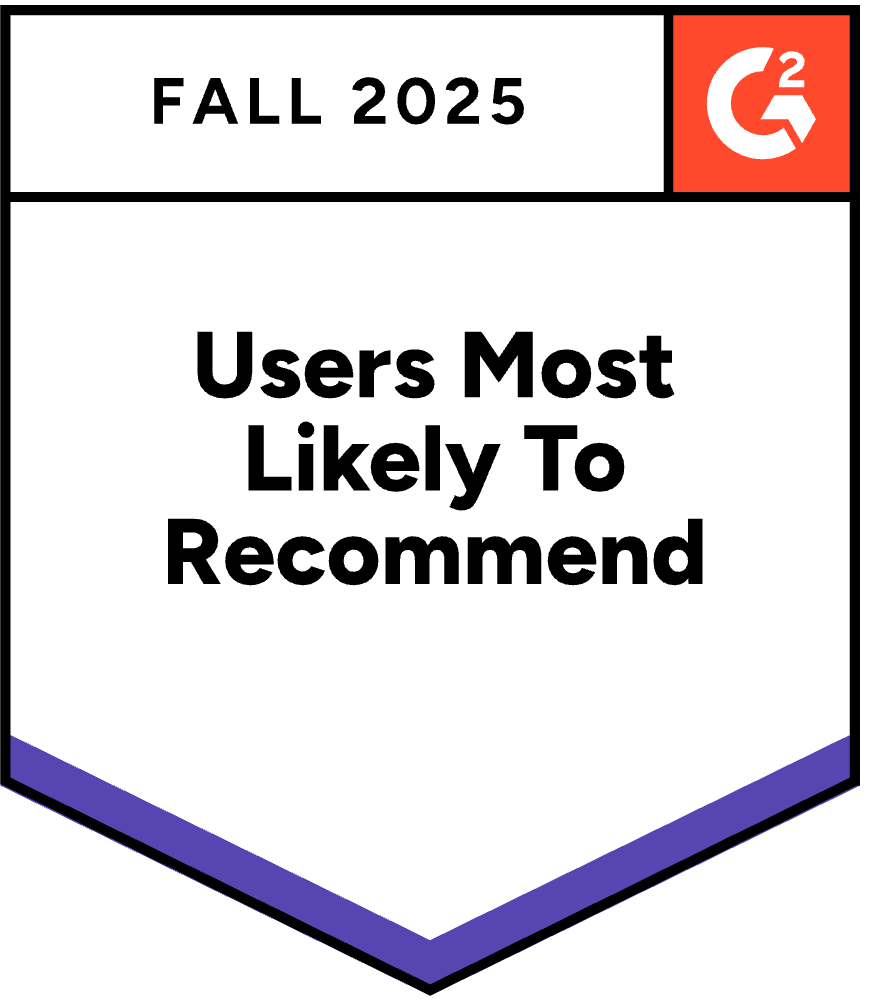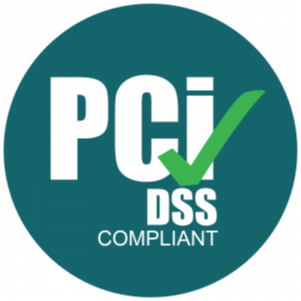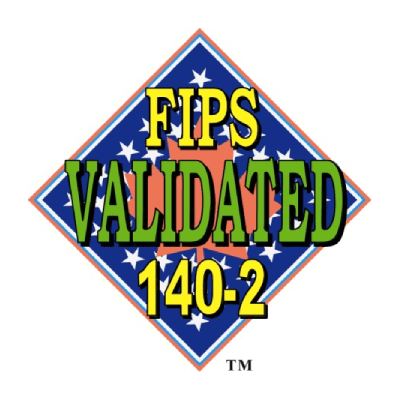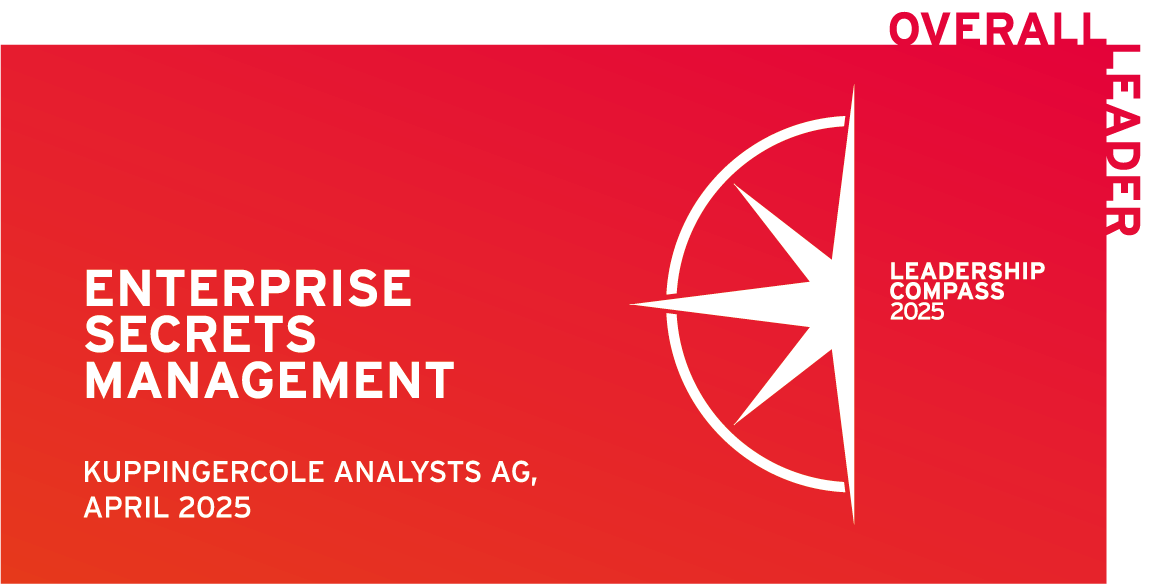Identity and access management includes all the tools, strategies, and policies IT managers use to control user access to critical resources in an organization. The exact definition of IAM and its implications on enterprise-grade security are far more complicated than that, however.
What Is Identity and Access Management?
Companies work with a wide variety of employees, business partners, and customers every day. They also need to integrate multiple devices from computers to smartphones to servers into the workflow as well. There must be a way to manage all these entities whenever they inevitably require access to internal applications and data.
For the enterprise IT field, identity and access management refers to how businesses determine the roles and access privileges of all entities in the network. Each of these entities is assigned a digital identity, and IAM monitors the access lifecycle of each one.
Identity management essentially functions as a form of permission authorization, granting users access to certain company assets in a specified context. Usernames and passwords are the most well-known way to do so, but these can be insecure in a complicated enterprise environment.
IAM allows network managers to handle administrative tasks—such as enforcing policies, tracking activities, changing roles, and creating audits—easily from a central location. IAM can be deployed either on the premises or through a third-party cloud-based subscription service.
It’s important to note the subtle difference between IAM and PAM (Privileged Access Management). Both concepts are vital to enterprise cybersecurity and often serve as complements to each other. While PAM manages internal users with privileged access to sensitive company resources, IAM handles the same access but for a business’s everyday users. This difference in target audience means that the risks to safeguard from are different.
The Components of IAM
Identity and Access Management (IAM) is a framework of integrated technologies that secure digital identities and control access to critical resources. A modern IAM system typically includes the following components:
Zero Trust Security: Zero Trust assumes no user or device is trusted by default. IAM is central to this model by continuously verifying identities, enforcing least-privilege access, and monitoring every request in real time.ybersecurity tools like single sign-on systems, 2-factor authentication, and even newer technologies like biometrics and AI-based behavioral analysis.
Single Sign-On (SSO): SSO lets users log in once to access multiple applications or systems. It improves the user experience, reduces password fatigue, and minimizes risks tied to repeated credential use.
Multi-Factor Authentication (MFA): MFA adds extra protection by requiring two or more factors from these categories: something you know (e.g., password, PIN), something you have (e.g., token, mobile device), or something you are (e.g., fingerprint, face scan). By layering checks, MFA makes credential theft and account takeover much harder.
Privileged Access Management (PAM): PAM protects high-value accounts like administrators and root users. It enforces least-privilege access, rotates credentials, monitors sessions, and records activity for audits, thereby reducing insider and external threats.
Risk-Based Authentication (RBA): Also referred to as adaptive authentication, RBA adapts authentication requirements based on context, such as device, IP address, or location. Logins may be approved, challenged with extra verification, or denied, depending on the risk level.
Identity Governance and Administration (IGA): IGA combines governance (policies, access reviews, compliance reporting) with administration (provisioning, credential management, entitlement control). It ensures users have the right access and supports compliance with regulations like GDPR, HIPAA, PCI DSS, and SOX.
Data Governance: Effective IAM depends on accurate, consistent identity data. Strong data governance ensures that user attributes are trustworthy and secure, which is especially critical as AI and machine learning tools analyze identity data.
Federated Identity Management: Federated identity management enables organizations to share digital identities with trusted partners. A single set of credentials can be used across multiple services, simplifying collaboration while maintaining strong security.
How IAM works
Identity and Access Management (IAM) works by creating digital identities for people, devices, and applications, then controlling what each one can access.
The process starts with authentication, which verifies that an identity is legitimate using passwords, biometrics, tokens, or a combination of these. Once verified, authorization defines what that identity can do, enforced through models like Role-Based Access Control (RBAC) or Attribute-Based Access Control (ABAC).
IAM applies to employees, partners, customers, software, and IoT devices, and each is granted only the access required. For example, one user may have viewing rights, another editing rights, and an administrator, full control.
Finally, IAM systems monitor and audit activity to detect unusual behavior and stop unauthorized actions. Modern cloud-based IAM platforms make this seamless across on-premises, cloud, and hybrid environments.
Authentication vs. Authorization
IT administrators must understand the distinction of identity management vs. access management. These concepts are distinct in the context of IAM.
- Identity management: This primarily deals with authentication, the process of ensuring that users are who they claim to be. The most common methods are usernames and passwords, temporary access sessions, and authentication apps. Multi-factor authentication is a popular option now to increase security further.
- Access management: This deals mainly with authorization, the act of giving a user permission to access sensitive company resources. Also known as access control, this aspect works in tandem with identity management.
Users in an organization must first prove identity through authentication before obtaining permissions with authorization.
Why Does IAM Matter?
Organizations today operate in a world defined by multicloud, remote work, AI-driven tools, and IoT, rendering perimeter-based security models obsolete. Identity and Access Management (IAM) has become a cybersecurity cornerstone, shifting the focus from securing network boundaries to managing who accesses what and when across users, devices, and workloads.
The urgency is clear. IBM’s Cost of a Data Breach Report 2024 shows credential theft now drives 20% of breaches, with an average cost of $4.81 million per incident and a detection time of 292 days. Compounding the threat, Check Point Research found a 160% surge in compromised credentials in 2025, including 14,000 exposures in just one month, even in companies with password policies in place.
“Compromised credentials are a direct threat to your organization’s security.”
— Coral Tayer, Security Researcher, External Risk Management, Check Point
IAM directly addresses these risks. Features like multi-factor authentication (MFA) and passwordless logins make stolen credentials harder to exploit. Role-based and attribute-based access controls enforce least privilege, limiting what compromised accounts can do. Continuous auditing and monitoring further reduce attacker dwell time, lowering breach costs by an average of $180,000 per incident.
Beyond security, IAM enables secure third-party collaboration with partners, suppliers, and customers while ensuring compliance with regulations such as GDPR, HIPAA, PCI DSS, and SOX. Cloud-based IAM solutions also make enterprise-grade protections accessible to organizations of every size.
In today’s identity-first world, IAM isn’t optional; it’s the strategic backbone of cybersecurity, safeguarding access, productivity, and compliance against modern threats.
What Are the Benefits of IAM Systems?
Identity and Access Management (IAM) goes beyond secure logins. It centralizes control, strengthens compliance, and streamlines how users access resources. Core benefits include:
- Improved Security: Role-based access, MFA, and continuous monitoring reduce the risk of breaches, credential theft, and unauthorized access.
- Regulatory Compliance: IAM helps meet requirements for HIPAA, GDPR, SOX, PCI DSS, and GLBA by enforcing authentication, access reviews, and detailed audit trails.
- Fewer Errors Through Automation: Automated onboarding, role changes, and offboarding minimize human mistakes while saving IT teams time and effort.
- Confidentiality & Control: Ensures only authorized users, including third parties and remote workers, can access sensitive files and applications.
- Streamlined IT Operations: Centralized updates, automated password resets, and reduced ticket volumes ease workloads for IT teams.
- Better User Experience: SSO, passwordless logins, and self-service password resets boost productivity and reduce friction across apps and devices.
- Accelerated Incident Response: Real-time alerts and activity tracking shorten attacker dwell time and speed up investigations.
- Secure Vendor Access: IAM enforces least privilege and time-bound access for external vendors, reducing third-party risk.
- Safe Collaboration: Provides a controlled environment for secure data and file sharing.
What Are the Key Identity and Access Management Compliance Regulations?
Identity and Access Management (IAM) is central to meeting today’s strict data security and privacy mandates. Across industries, regulations require organizations to prove they have strong authentication, access controls, and audit capabilities. Key frameworks include:
- GDPR (General Data Protection Regulation): Applies to any organization handling EU resident data. Requires encryption, audit logs, and compliance with “right to be forgotten” requests.
- PCI DSS (Payment Card Industry Data Security Standard): Applies to organizations handling cardholder data. Requirement 8.1 mandates user IDs, MFA, account offboarding, and admin restrictions.
- HIPAA (Health Insurance Portability and Accountability Act): Requires protection of patient with role-based access, segregation of duties, automated privilege updates, and secure third-party access.
- SOX (Sarbanes‑Oxley Act of 2002): Applies to public companies and financial institutions, requiring integrity in financial reporting and secure audit processes. IAM enables centralized administration, onboarding/offboarding, segregation of duties, and compliance-ready logging.
- FERPA (Family Educational Rights and Privacy Act): Applies to U.S. schools and universities, protecting student records with secure authentication and limited staff privileges. IAM enforces authentication, role-based privileges, encrypted credentials, and identity lifecycle management.
- CCPA (California Consumer Privacy Act): Grants California residents rights over their personal data, including deletion and opt-out. IAM enforces authentication, access transparency, deletion requests, and activity audits.
- GLBA (Gramm‑Leach‑Bliley Act): Requires financial institutions to safeguard customer financial data and disclosure of sharing practices. IAM supports compliance with ACLs, permission updates, authentication, and audit logs.
- NERC CIP (Critical Infrastructure Protection Standards): Applies to the North American power grid and requires strict controls for critical cyber assets. IAM enforces MFA, granular access, continuous monitoring, and auditing for utilities and energy providers.
- ISO/IEC 27001: A global information security standard, requires consistent access provisioning, password management, activity logging, and privileged access approvals.
What IAM Technologies and Tools Are Available?
Organizations use a mix of IAM tools and platforms to authenticate users, manage access, and monitor activity. Some deploy point solutions for specific needs, while others adopt integrated IAM platforms that unify multiple capabilities under one system.
Directory Services
Directories store and manage identity data, credentials, and access permissions. Solutions like Microsoft Active Directory and Google Workspace act as central hubs, often extended with identity federation so identities can be shared securely across systems using standards like Security Assertion Markup Language (SAML) and OpenID Connect (OIDC). An example is social logins such as “Sign in with Google.”
Authentication
Modern IAM platforms go beyond usernames and passwords to include:
- Single Sign-On (SSO): One login grants access to multiple apps.
- Multi-Factor Authentication (MFA) / Two-Factor Authentication (2FA): Adds layers such as OTPs, tokens, or biometrics.
- Adaptive Authentication (Risk-Based): Adjusts requirements based on context (e.g., location, device, time, or behavior).
- Passwordless Authentication: Uses secure alternatives like passkeys or cryptographic keys, reducing reliance on vulnerable passwords.
Access Control
IAM enforces granular access through models such as:
- Role-Based Access Control (RBAC): Ties permissions to job roles.
- Attribute-Based Access Control (ABAC): Grants access based on user attributes, or environmental context.
- Mandatory/Discretionary Access Control (MAC/DAC): Policies defined centrally or by resource owners.
For higher-risk accounts, Privileged Access Management (PAM) adds credential vaulting, just-in-time access, and session monitoring to secure administrator-level rights.
Credential and Secrets Management
Credential managers securely store and rotate user passwords, passkeys, and tokens. Secrets management extends this protection to nonhuman identities such as application, APIs, and workloads, typically via centralized secure vaults.
Identity Governance and Administration (IGA)
IGA tools ensure users have only the access they need, automate provisioning and deprovisioning, support compliance reporting, and enforce policies like segregation of duties.
Identity Threat Detection and Response (ITDR)
An emerging category, ITDR uses analytics and automation to detect and respond to identity-based threats such as privilege escalation, misconfigurations, and anomalous activity.
Customer IAM (CIAM)
CIAM manages the identities of external users, enabling secure logins, consent management, and seamless access to customer-facing services like e-commerce or digital portals.
Cloud IAM / IDaaS
Cloud-based IAM, also called Identity-as-a-Service (IDaaS), delivers IAM as a SaaS solution. IDaaS simplifies management across hybrid and multicloud environments and reduces infrastructure overhead by handling directories, authentication, and activity logging in the cloud.
Core IAM Standards
Most IAM platforms are built on open standards to ensure interoperability:
- Security Assertion Markup Language: Enables SSO across domains by exchanging authentication data.
- OIDC (OpenID Connect): A modern identity layer built on OAuth 2.0 for secure, seamless logins.
- SCIM (System for Cross-Domain Identity Management): Automates user provisioning and synchronization between systems
What IAM Solutions Exist for Organizations?
Several types of Identity and Access Management (IAM) solutions exist, and the right choice depends on an organization’s size, industry, and use case.
Small and Mid-Sized Businesses (SMBs)
Smaller companies often choose cloud-based IAM or Identity-as-a-Service (IDaaS) platforms. These solutions are easier to deploy and maintain, offering essentials like Single Sign-On (SSO), Multi-Factor Authentication (MFA), and centralized user management without heavy infrastructure costs.
Enterprises
Larger organizations typically adopt hybrid IAM models that combine on-premises and cloud capabilities. They often extend IAM with Privileged Access Management (PAM) for admin accounts and Identity Governance and Administration (IGA) to enforce policies, automate provisioning, and meet regulatory demands.
Customer-Facing Organizations
Businesses that manage external users such as retailers, banks, or digital platforms use Customer IAM (CIAM). CIAM delivers secure logins, consent management, and frictionless access for millions of users while complying with privacy laws like GDPR and CCPA.
Critical Infrastructure and Highly Regulated Industries
Utilities, healthcare providers, and financial institutions rely on IAM combined with Zero Trust models, PAM, and continuous auditing. These tools help protect sensitive data, enforce least privilege, and meet strict compliance standards such as HIPAA, SOX, and NERC CIP.
Types of IAM solutions and identity services
Not every organization deploys Identity and Access Management (IAM) the same way. The core solution is typically an Identity Provider (IdP), which authenticates users and manages access to systems.
IdPs can be deployed in three models:
- On-Premises IdPs: Installed and managed in an organization’s own data centers. These “legacy” solutions offer tight control but can be costly and harder to scale. Examples include SiteMinder, Ping Identity, Oracle Identity Manager (OAM), and IBM Security Identity Manager.
- Cloud-Based IdPs: Delivered as a service and hosted in the cloud, these solutions are scalable, flexible, and easier to maintain. Examples include Microsoft Entra ID, Okta, AWS Cognito, and Akeyless, a cloud-native platform designed for modern IAM, secrets management, and privileged access.
- Hybrid IdPs: A mix of on-premises and cloud deployments. Most enterprises fall into this category, using hybrid IAM both for practical reasons, such as migration challenges, and as a resilience strategy to provide redundancy in case of outages.
How Can You Implement IAM Security Tools?
Implementing IAM requires aligning technology with business needs and securing users across environments.
- Fit IAM to Business Needs: IAM scales for both enterprises and SMBs, simplifying access, reducing password reliance, and authenticating users across devices and locations.
- Plan for Integration: Common pitfalls include poor system integration, shadow IT, and cloud migration issues. A clear identity strategy driven by IT, security, and business teams reduces these risks.
- Adopt Cloud-Based IAM (IDaaS): IDaaS offers flexible, SaaS-based identity management. It streamlines account provisioning, governance, and access across Windows, Mac, Linux, and mobile, reducing IT overhead while enabling remote and customer access.
- Secure Hybrid and Cloud Environments: Use context-aware authentication to verify users by behavior, device, or location, and RBAC to enforce least privilege. Regular access reviews keep controls effective and compliant.
- Support Remote Work and BYOD: IAM strengthens remote and personal device access with SSO, MFA, and continuous monitoring. Device-based access policies ensure security while preserving user productivity.
FAQs on Identity and Access Management (IAM)
How Identity and Access Management (IAM) Boosts Cybersecurity?
IAM strengthens defenses by ensuring the right users have the right access at the right time. It helps organizations:
- Block unauthorized access with MFA, SSO, and strong password policies.
- Limit insider threats by enforcing least privilege and preventing privilege creep.
- Automate user lifecycle tasks like onboarding and offboarding to close security gaps.
- Detect and respond quickly by monitoring activity in real time and flagging anomalies.
What Is the Core Objective of Identity and Access Management?
The core objective of Identity and Access Management (IAM) is to ensure that the right individuals have the right level of access to the right resources at the right time. IAM centralizes identity control, authenticates users, enforces least privilege, and monitors activity to protect sensitive data. In practice, it prevents unauthorized access, reduces insider risks, streamlines user lifecycle management, and helps organizations stay compliance with security regulations.
What are the 4 pillars of IAM?
The four pillars of Identity and Access Management are:
- Identity Governance and Administration (IGA): Automates provisioning, enforces policies, and ensures users only have the access they need.
- Access Management (AM): Handles authentication and authorization with tools like MFA, SSO, and RBAC.
- Privileged Access Management (PAM): Secures high-risk accounts, such as admins, root, and service accounts, using least privilege, password rotation, and session monitoring.
- Active Directory Management (ADMgmt): Manages and secures identities in Microsoft AD, integrates with cloud platforms, and enforces RBAC.
Together, these pillars form the foundation of IAM, protecting identities, controlling access, and reducing security risks.
What are the 4 A’s of IAM?
The 4 As of Identity and Access Management define its core functions:
- Administration: Provisioning and deprovisioning user accounts, ensuring access is granted only as long as needed.
- Authentication: Verifying identity with passwords, certificates, biometrics, or MFA before granting entry.
- Authorization: Determining what authenticated users can do through models like Role-Based Access Control (RBAC) and Attribute-Based Access Control (ABAC).
- Audit: Logging and reviewing access activity to ensure compliance, detect anomalies, and support investigations.
Is IAM considered cybersecurity?
Yes. Identity and Access Management (IAM) is a core discipline within cybersecurity. But instead of focusing on securing networks or devices, IAM secures who has access to what across systems, applications, and data.


